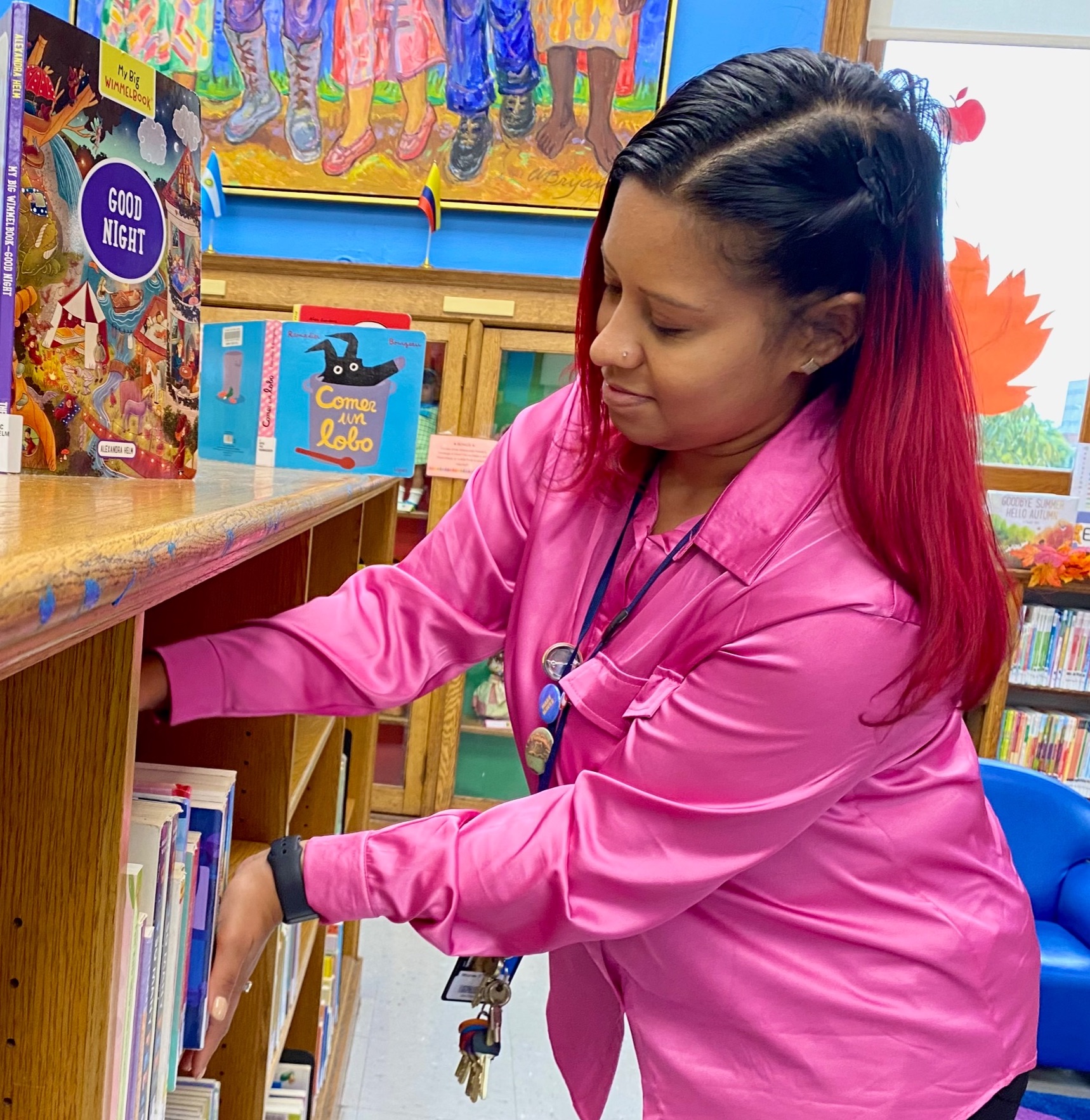The Mott Haven Library is a central player in New York Public Library’s effort to offer high quality cellular internet service to neighborhoods across the city.
Mott Haven was one of six city libraries chosen for a pilot program this summer that paired interested library patrons with free Google Chromebooks and routers. The routers connected to Citizens Broadband Radio Service, a 4G and 5G cellular service that the federal government recently made available free to the public to increase Wi-Fi access.
While the pilot ended on Sept. 2, Mott Haven families that signed up are still able to use and check out the equipment to access Wi-Fi. The New York Public Library hopes to use the lessons from the pilot to determine the best way to expand the program city-wide.
Overseeing the pilot in Mott Haven was Library Manager Tiffany McCrae, who hopes it will lead to much-expanded access to internet services.
“Sometimes people cannot afford that technology,” she said, noting that during COVID-19, a lot of people lost their jobs. “Giving people an opportunity to do online services comfortably from their homes, especially because we were closed for so long, was important for me,” she added.
At the start, 20 sets of routers and laptops were available for distribution at the Mott Haven Library. Due to high demand, the library added an additional 30 sets. While next steps in the program are determined, patrons over 18 are still able to check out devices for 3 weeks and are able to renew them as they would a book.
A tall radio device atop the library at 140th Street and Alexander Avenue beams the Wi-Fi service to connected routers in the area. The current coverage area is on the blocks surrounding the library, from 136th to 142nd Streets. This includes four New York City Housing Authority buildings at Mitchel Houses two blocks away from the library, and six NYCHA Mott Haven Houses buildings. But the equipment is capable of covering a ten-block radius, increasing as more radios are deployed.
Community need was a factor that helped determine the six test sites for the pilot, which aims to expand across the city. The other five test sites were Grand Concourse Library in The Bronx; Countee Cullen Library, Schomburg Center for Research in Black Culture, and Seward Park Library in Manhattan; and Stapleton Park Library in Staten Island.
“This is definitely a neighborhood in which there is a digital divide,” McCrae said. Since the pandemic, access to online services for many Bronxites has become more vital, especially children’s access to education.
In Fall 2020, during the height of the pandemic when children had to access instruction from home, the Department of Education reported that in zip code 10451, which includes parts of Mott Haven, the median student attendance rate was 76.9%. In Hunts Point, the median rate was 86.3%.
The city’s Internet Master Plan classifies Hunts Point and Mott Haven as having low home and mobile broadband connection, meaning only 34%-54% of households have home and mobile subscriptions.
In July, residents living in Mott Haven Houses and Patterson Houses also qualified to receive free high-speed internet and basic cable TV service through another program ‘Big Apple Connect,’ which aims to provide services to around 300,000 New Yorkers living in NYCHA developments by the end of 2023. So far, 74% of households from Mott Haven Houses and 70% from Patterson Houses have enrolled in the program. McCrae hopes that the programs can work together on providing free local access to Wi-Fi.
In September, Community Service Society released a report of key findings from its 2021 citywide survey on the digital divide. One of its key findings was that nearly a quarter of Bronx responders lacked in-home internet access, a rate nearly double the share of Brooklyn and Queens respondents.
The New York Public Library contracted with Celona, a 5G radio technology firm, to provide the radio equipment that accesses Citizen Band Radio Service frequencies and beams them out in radio waves.
“It’s a big wireless radio that broadcasts a signal that people can connect to,” Celona media contact David Callisch said. “The idea is to make it brain dead simple to connect. The router connects to the CBRS signal, and the Wi-Fi part provides local access to the customer.”
The technology is likely to be used more frequently by organizations that truly depend on wireless mobility, such as universities, warehouses, manufacturing sites and hospitals, Callisch said. “Organizations have tried to use Wi-Fi to do it all but have found that it simply can’t deal with interference, obstacles and congestion. Cellular can.”
The New York Public Library is currently reviewing the information provided by the pilots and will then determine next steps.
“What’s remarkable about NYPL is, you’re talking about one of the oldest institutions that’s taking one of the most progressive initiatives in the country,” Callisch reflected. “They are taking cutting edge technology that is still very new and using it in a very productive and admirable way.”

